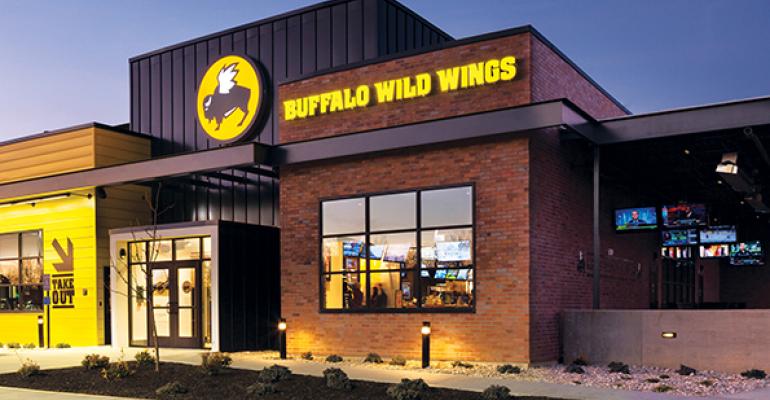The sporting calendar did Buffalo Wild Wings Inc. no favors this fall: Fewer football games in September and a later World Series have led to slower sales in the third quarter and early in the fourth quarter, executives said Wednesday.
But investors weren’t convinced. The Minneapolis-based company’s stock plunged more than 17 percent on Thursday after it reported disappointing sales and earnings results, and lowered guidance for the year.
The company said that earnings growth would be in the “single digits” for the year, after noting that same-store sales at company locations slowed to 3.9 percent in the third quarter ended Sept. 27. Same-store sales rose 2.8 percent in the first four weeks of the fourth quarter.
As a sports bar, Buffalo Wild Wings depends on popular sporting events to generate sales. In September, the chicken wing chain had six fewer days with no college or professional football game than last year.
“If you look aside from those six event days, we had strong same-store sales. So it really was a lot about that shift in the quarter,” Buffalo Wild Wings chief operating officer Jim Schmidt said during the company’s earnings call.
Schmidt said he was not “overly concerned” because the company had high guest satisfaction scores in the quarter. And he said that overall casual-dining segment sales appear to be slowing down, too.
“When you look at the market as a whole, I think there has been a softening in same-store sales,” Schmidt said. “We outperformed the market, but we do tend to move with the market.”
Executives said that third-quarter earnings per share fell to $1 per share, from $1.14 per share the year before. That was well below analyst expectations of $1.29 per share. Management lowered expectations for earnings growth this year to “single digits,” from 13 percent previously.
Investors didn’t hit only Buffalo Wild Wings on the news. The stock price of Dallas-based Wingstop Restaurants Inc., Buffalo Wild Wings’ fast-casual competitor, fell by more than 5 percent on Thursday. Investors believe the two chains’ sales trends tend to follow one another, and chicken wing costs tend to impact both concepts.
Buffalo Wild Wings executives did highlight strategies during the call that they said would generate more sales in the fourth quarter and into 2016. That includes takeout sales. Over the past year, takeout sales averaged between 14 percent and 15 percent of sales. Buffalo Wild Wings CEO Sally Smith said that the company has enhanced its website and mobile app to create a better takeout ordering experience.
The company has also started promoting online and mobile ordering for takeout. At the moment, Smith said, 11 percent of orders are from mobile devices. “We expect this to increase as guest awareness builds,” she said.
Next week, Buffalo Wild Wings plans to launch a new menu that “highlights our menu variety” and “addresses the needs of all dayparts with the goal of maximizing profitability,” Smith said.
That includes a new limited-time menu with items like street tacos and Buffalo Mac & Cheese.
The company also started testing giving servers handheld devices in 20 locations to enable servers to take orders and payment. Smith said servers are more efficient in taking payments using the devices, and they also help with efficiency inside the kitchen.
Smith hinted that the devices could help with labor costs, as the chain will start using handheld devices “in higher wage states,” and will then evaluate further expansion of the program.
“We think we have some initiatives going forward that will help drive same-store sales,” Smith said.
The company’s earnings problem in the third quarter came from “an accumulation of little things not going our way,” Buffalo Wild Wings chief financial officer Mary Twinem said. That included chicken wing prices that were higher than expected, as were health insurance and workers’ compensation costs. Additionally, the company’s $160 million acquisition of 41 locations increased depreciation, amortization and other costs.
But the company’s reduced guidance for the year is rooted in the sales slowdown, Twinem said. Revenue at the 41 locations acquired was negative, for instance, and while that has not impacted same-store sales, “the revenue is a little lower than we wanted to be acquiring them at.”
Buffalo Wild Wings has traditionally reported same-store sales in the double digits on a two-year basis, Twinem said. Same-store sales were just over 8 percent on a two-year basis at company locations in the first four weeks of the current quarter.
But executives insisted that earnings would return to expected levels next year. The company projects 20-percent earnings growth in 2016.
Contact Jonathan Maze at [email protected].
Follow him on Twitter: @jonathanmaze





